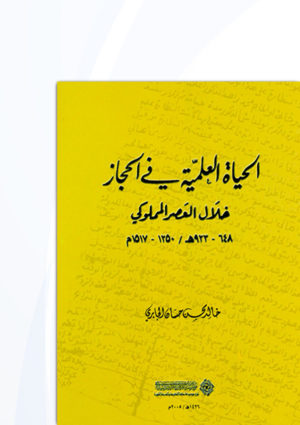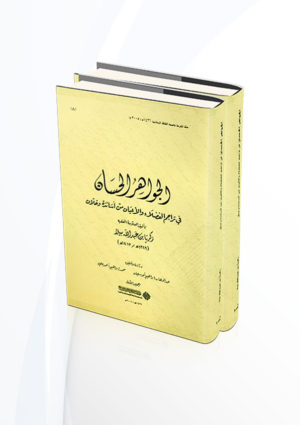Summary
The book casts light on a key phase in scholarly life in Iraq. It compiles the biographies of a group of Iraq’s most prominent scholars during that phase, whose biographies had only been compiled by al-Raḥbī in this book.
The value and importance of these biographies lies in the proximity of the author to those whose biographies he compiled, and his personal acquaintance with them. Indeed, he presents biographies for some, who are at the level of his teachers, while others are his peers, and others still are members of his family, considered one of the most prominent scholarly families in Iraq in that phase.
The book’s content provides a view of the scholarly and literary level enjoyed by the pedigree scholarly families, whose biographies the author presented, such as the Ḥaydarī, Suwaydī, al-‘Umarī, al-Jabūrī, al-Khayrī, and al-Raḥbī families, and others.
The historical period addressed by the book is considered among the key phases in the history of the scholarly movement in Iraq, which did not find worthy treatment to do it justice, and still desperately needs other books to be published that document the scholarly activities and scholars of that time.
The book is compiled in a novel form of authorship, where in reality it represents three books in one:
The first: comprising biographies, in which he included the most prominent scholars of Iraq in his time.
The second: on the literary assemblies (maqāmāt), comprising 32 assemblies, following the example of the maqamāt composed by Badī‘ al-Zamān al-Hamdānī, and al-Ḥarīrī. The author rivalled these mentioned others, with the beauty of his phrases and exquisite crafting.
The third: a book comprising 33 chapters on literature and other topics, where each chapter addressed a separate topic; a chapter on knowledge and scholars, a chapter on literature, a chapter on love (al-ṣabābah) and related matters, a chapter on amatory prelude (al-nasīb), and so on. The author displayed talent in authorship and in his recall of illustrative examples.
The book was ordered in an exquisite manner, where he blended the three types together; presenting the biography first, followed by the chapter, then concluding with an assembly (maqāmah), and so on until the end of the book.
In addition, the book included valuable, scientific treatises, some are unicum exemplars found only in this book; most works belonged to persons whose biographies were presented, to demonstrate their scholarly and learned status. He may also write a treatise emulating that of one of the scholars featured, or he may include a treatise by someone not featured, so as to decorate, and enrich the work.
The book was critically edited on an original text that the author wrote in his own hand, and gifted to Grand Vizier Muḥammad Rāghib Pasha, and is held to this day in his library in Istanbul. Other manuscript copies of the book were taken into consideration, even though these were unimportant in the presence of the autograph copy.
The book is considered a valuable gem, precious jewel, and rare literary artefact in its content, as penned by the author from his superlative compilation, and his own composition of prose (nathr) and poetry, and for the illustrative literary and poetry examples (shawāhid), representing the most superlative writings of Arab poets and persons of letters from diverse eras.














Reviews
There are no reviews yet.